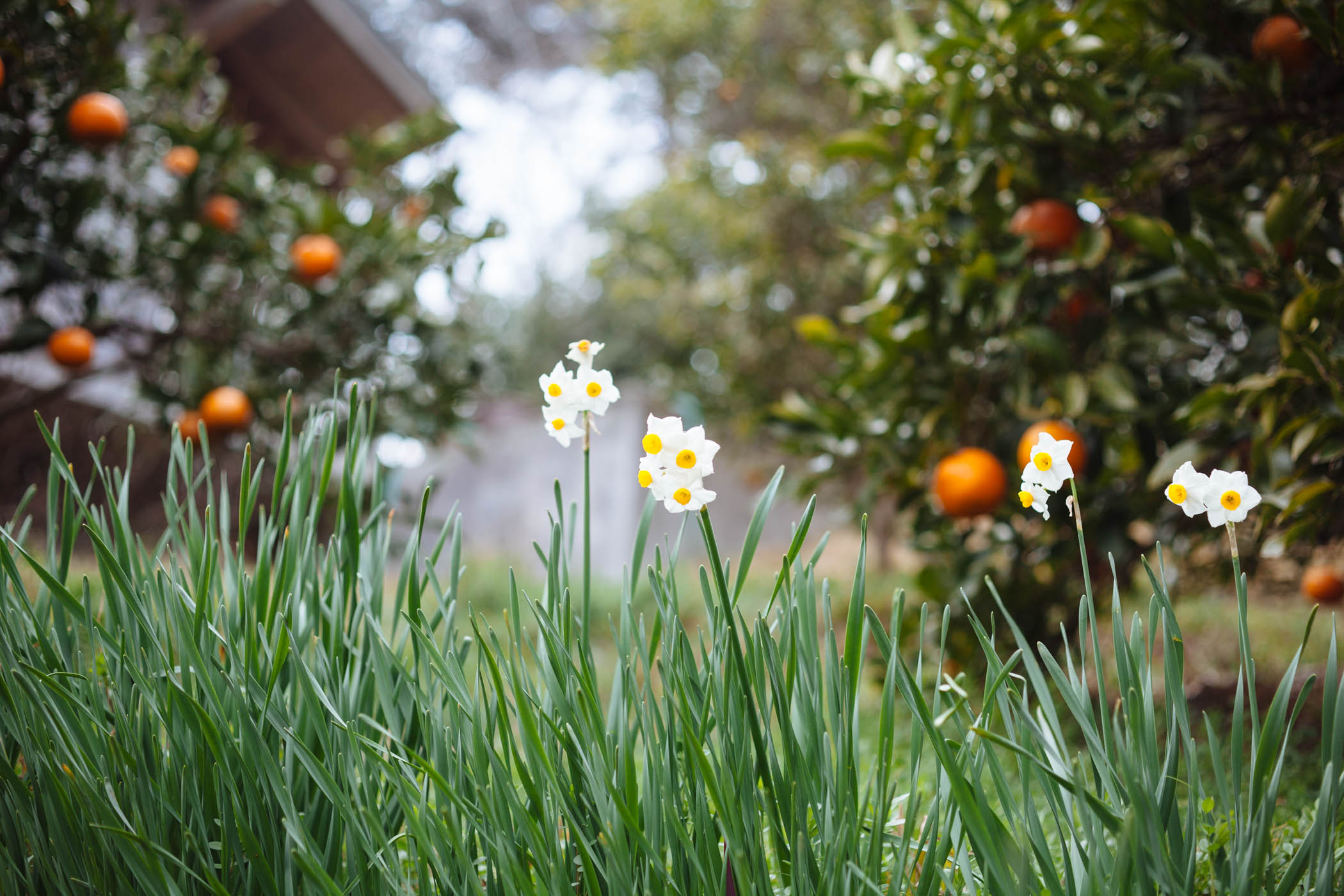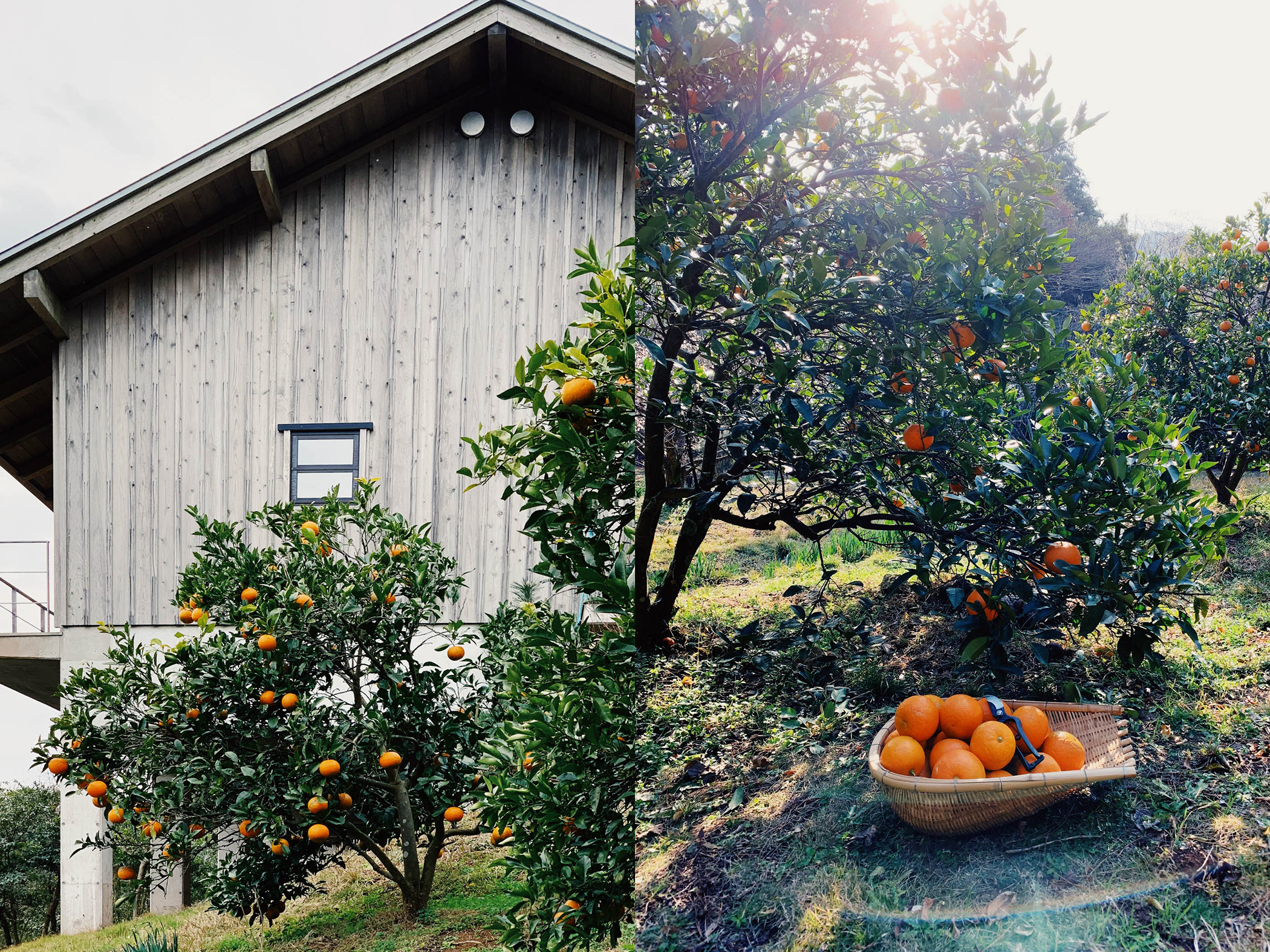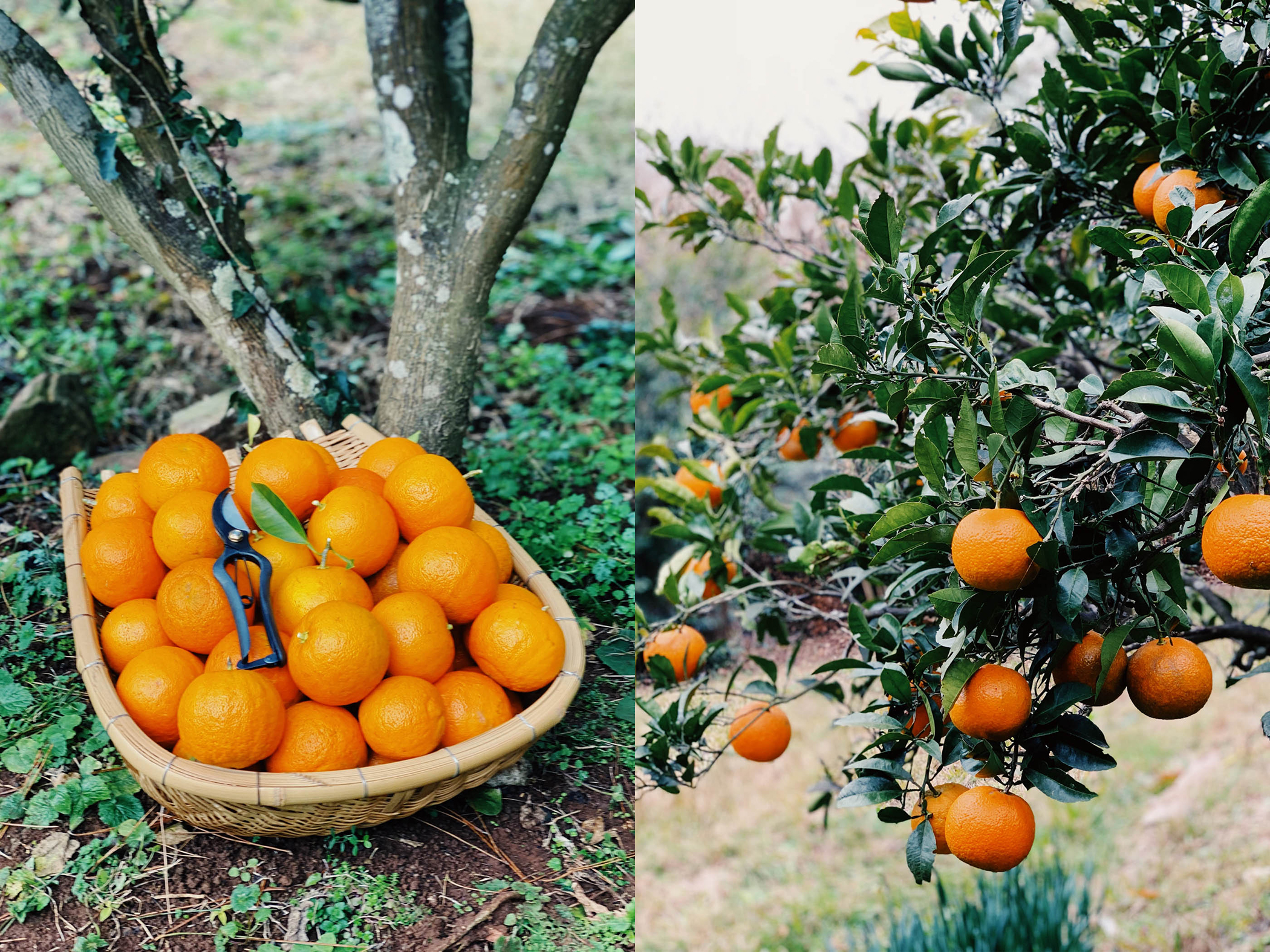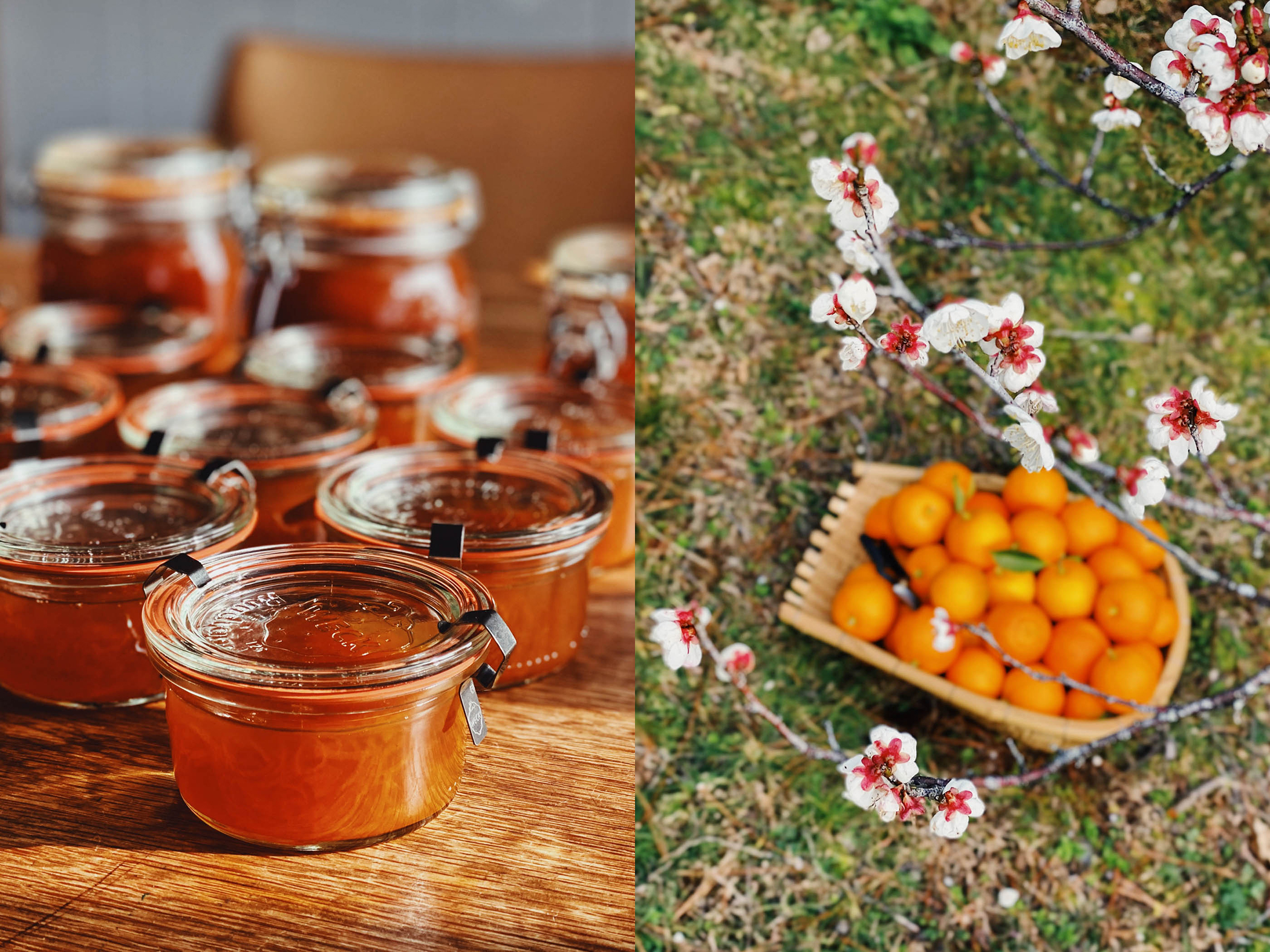East meets west in an orange tree

When I arrived in Mirukashi, untethered by words or customs to the culture, I plunged my hands into the earth in an effort to ground myself. I tried to tame the wild mountainside and to garden in the hard, red clay to little avail and so instead turned my attention to a small orchard with 12 Japanese plum trees alongside a few citrus trees planted behind Kuniko’s house. In a zealous effort to expand the orchard I planted too many saplings around the property, often at an unreasonably close proximity. I have moved so many trees so many times that I have, at times, lost track of them. When I would occasionally rediscover one it was like running into a long lost friend. Now the nashi pear tree offers delicate white flowers in spring while yuzu, sudachi, and kabosu give us a steady offering of charming citruses for flavoring soups and vegetables and fatty winter fish. A baby fig and meyer lemon tree are the latest additions.

I love to visit the orchard if for no other reason than to take stock and measure the state of things. Soon after New Year’s, thick rows of petit daffodils bloom and orange orbs dot the daidai trees. While much of nature’s bounty is fleeting, the daidai trees are somewhat forgiving. The name itself means across generations and if left unpicked its fruit does not fall easily. In the Japanese tradition, daidai are favored for the sour juice squeezed from unripe green fruits in early winter to use in ponzu, a dressing made of their juice mixed with soy and stock. But there is only so much ponzu one requires and inevitably many orbs remain on the tree to ripen. In the Western tradition this is when they have reached their prime. Better known as Seville on other continents, daidai make for a divine marmalade. With two heavily jeweled trees at my fingertips I dedicate a few days each year to bottling them up into the most intensely bittersweet spread. Marmalade is a labor of love, a labor I love. A batch of marmalade is a full day’s work, hours spent peeling and slicing, simmering and stirring until my hands cramp and my feet ache. I particularly love a morning spent slicing. Working the knife along peel after peel my mind quiets to the murmur of steel on wood. Citrus oils perfume the air. In the afternoon I’ll wrestle pectin from the pith and stir the boil attentively. It’s best to give marmalade the time it requires as preserves of any kind punish those who rush. In the blink of an eye sugar scalds and a marmalade’s iridescence is clouded. Though long and exhausting, I look forward to these days in the kitchen, slicing and simmering and preserving the bounty. It connects me to my roots in New England where the summer harvest is put up for winter. After the day’s effort, a great mound of citrus are reduced to just a few jars of marmalade the color of a late August sunset with a concentration of bittersweet flavor as piercing as the brilliant winter sun. I delight in the aroma of bittersweet citrus rising from the iridescent amber mix bubbling furiously on the stove. As the day’s warmth leaves with the sun I lay a fire in the hearth, comforted by the heat and in knowing that the days are lengthening, if imperceptibly, easing us towards a nascent spring.


